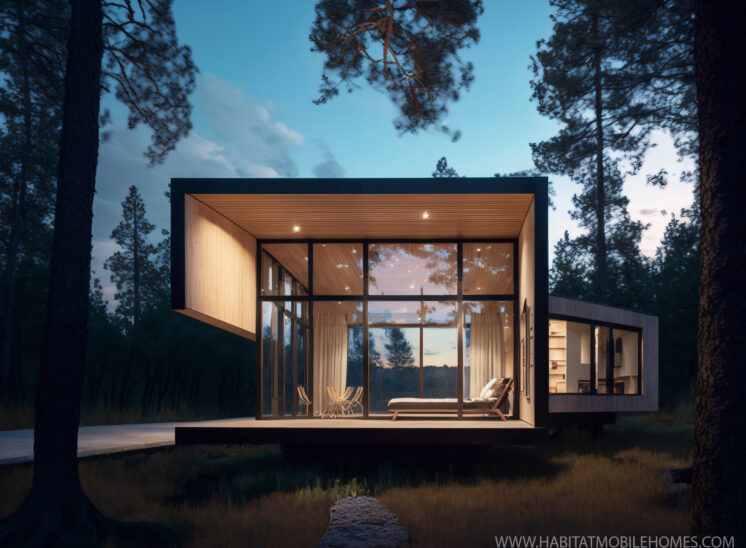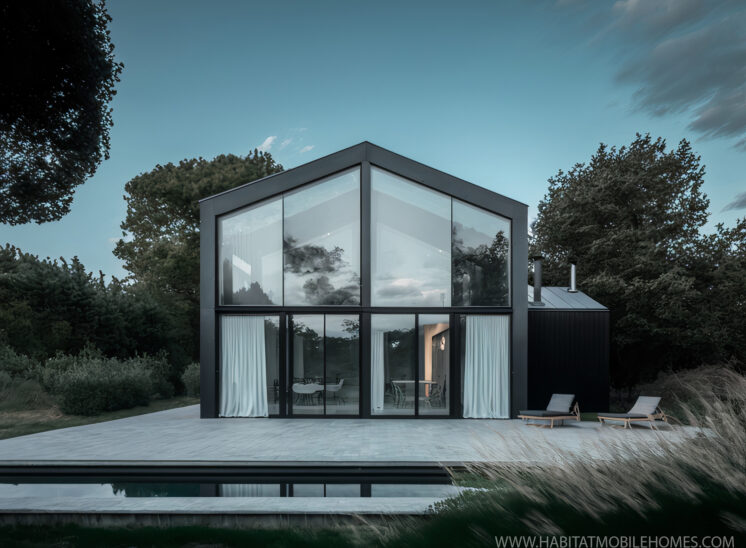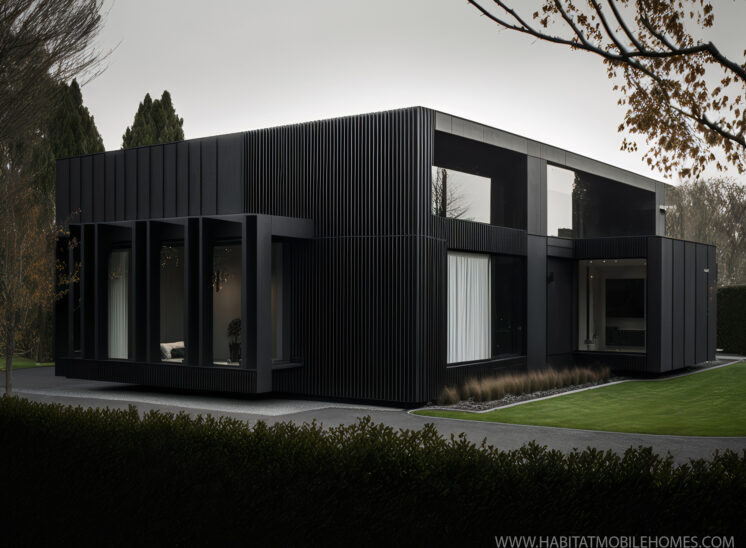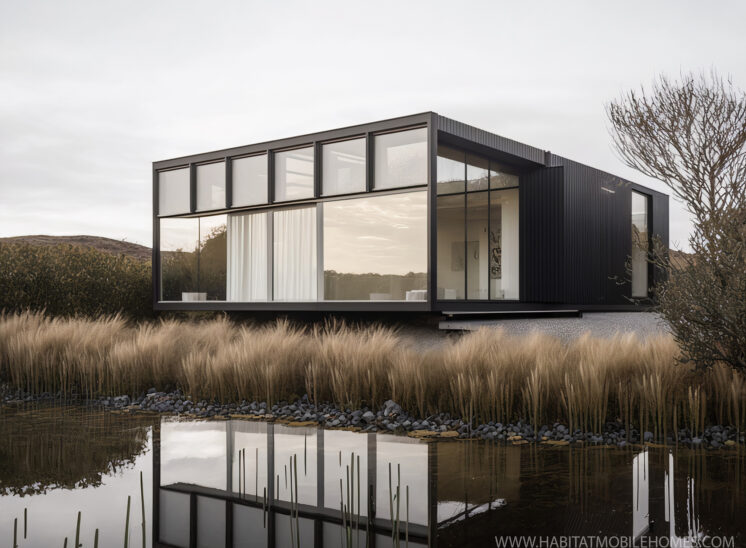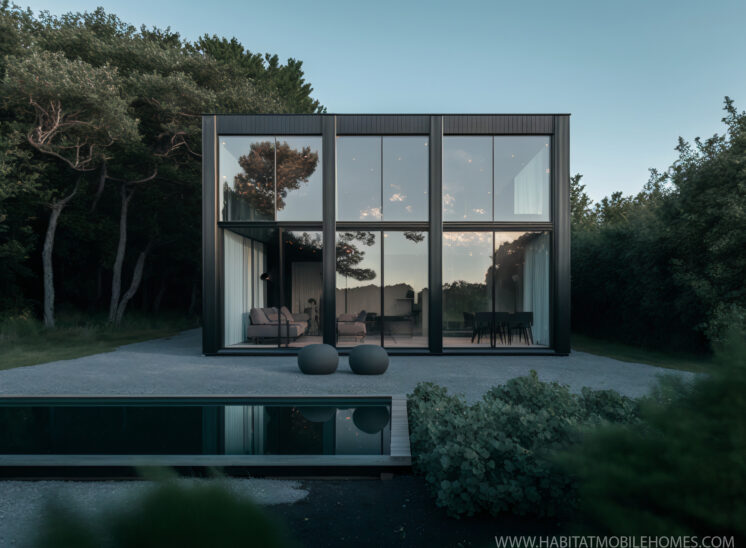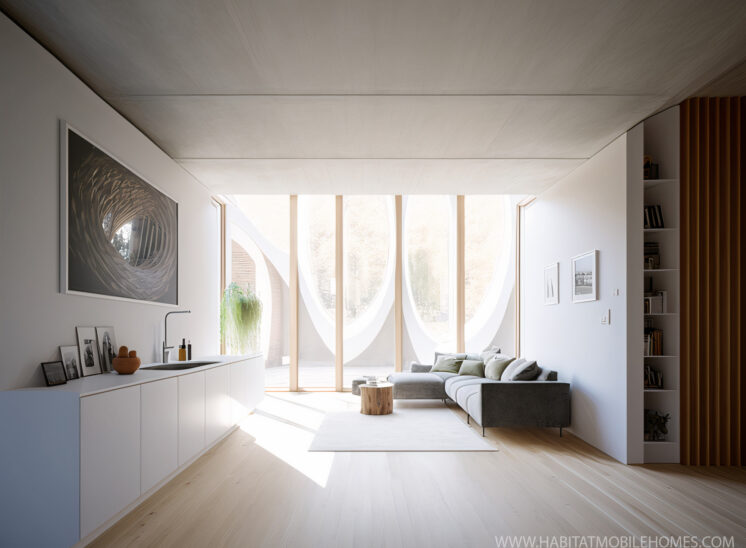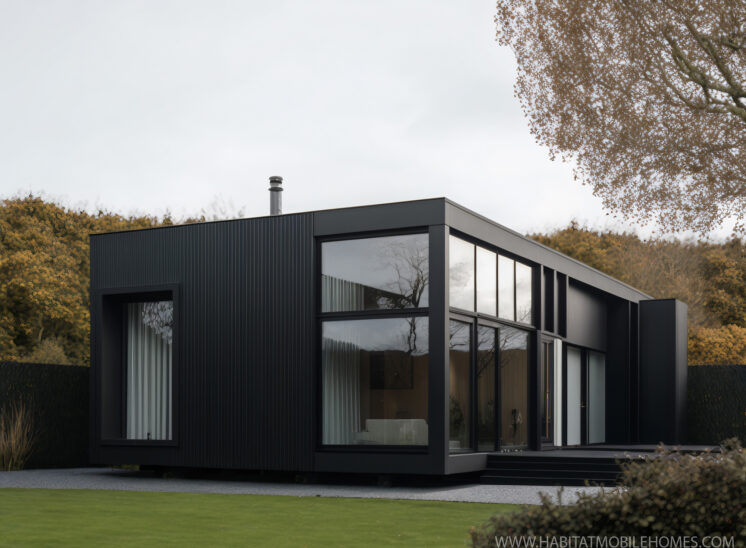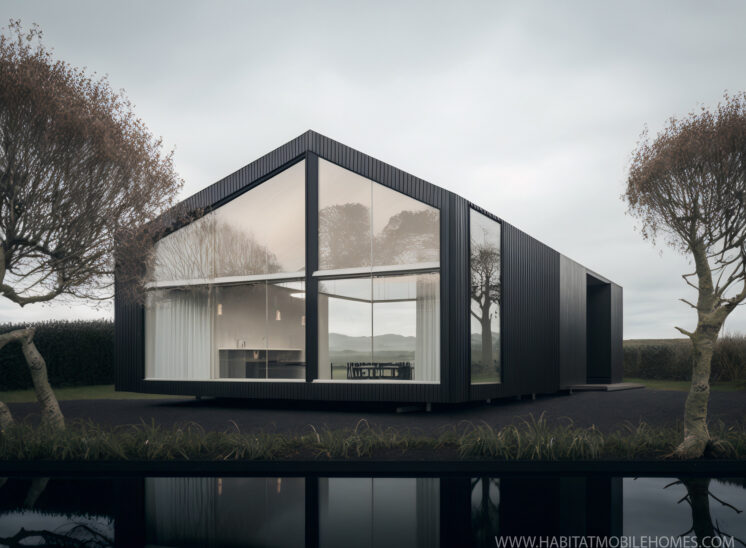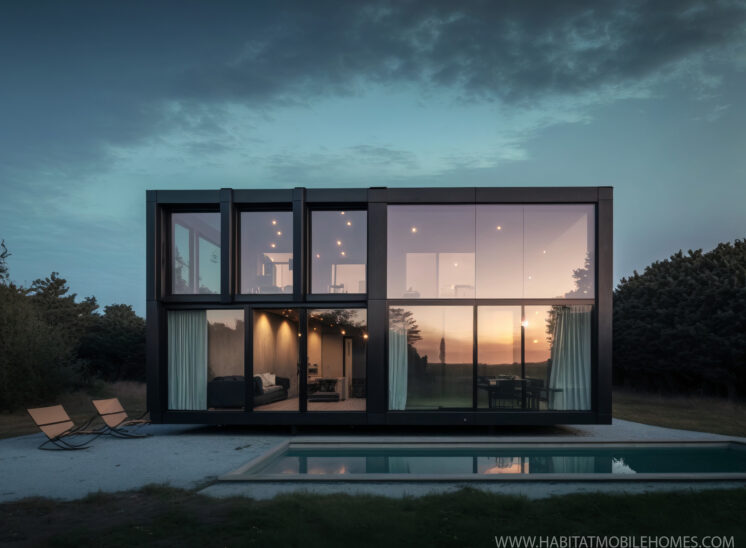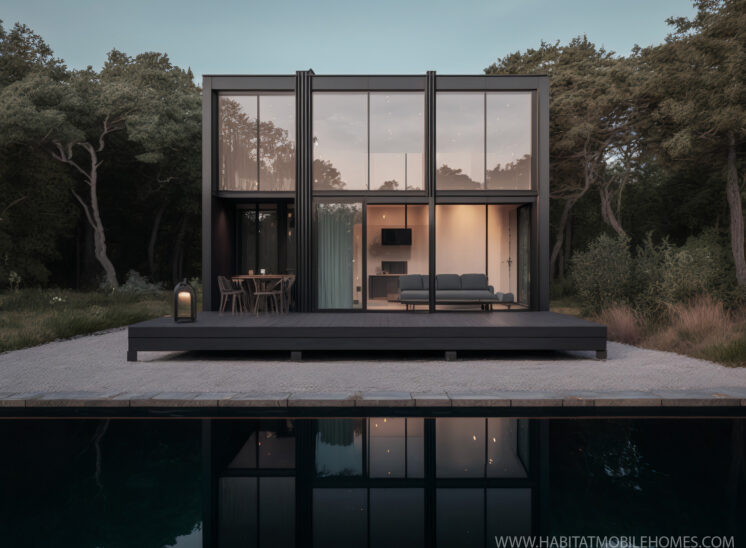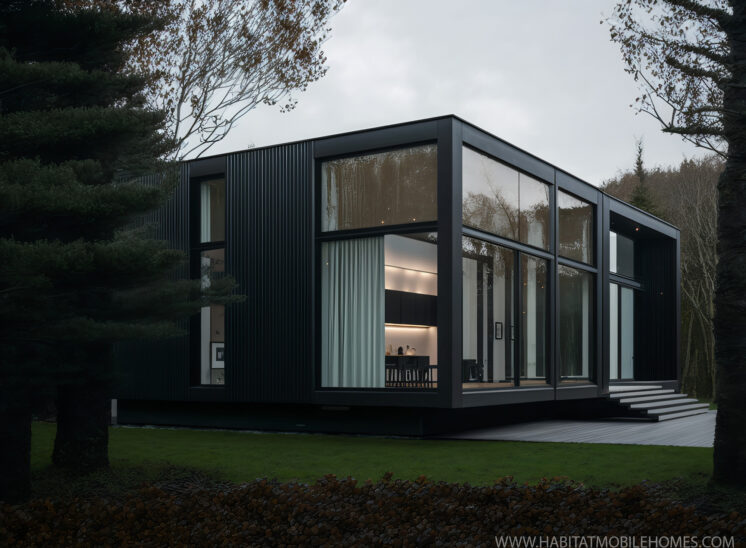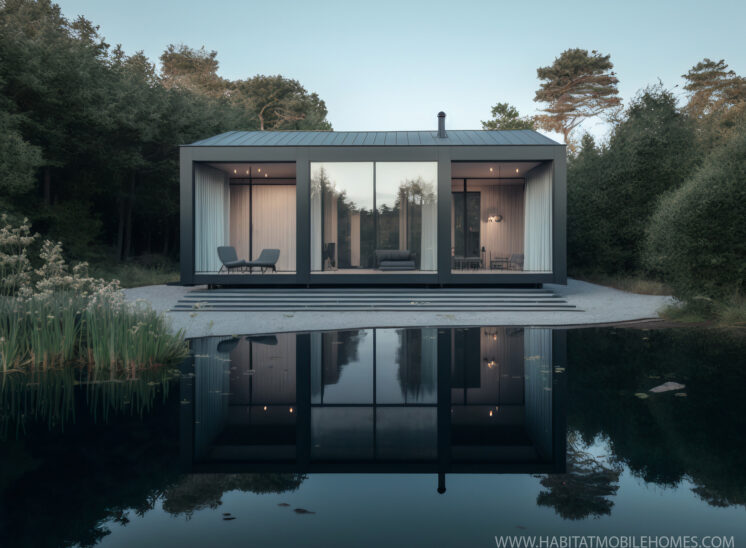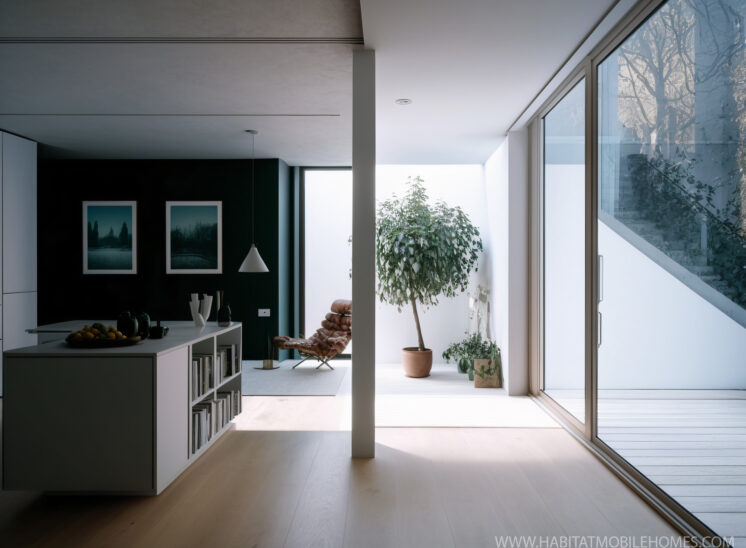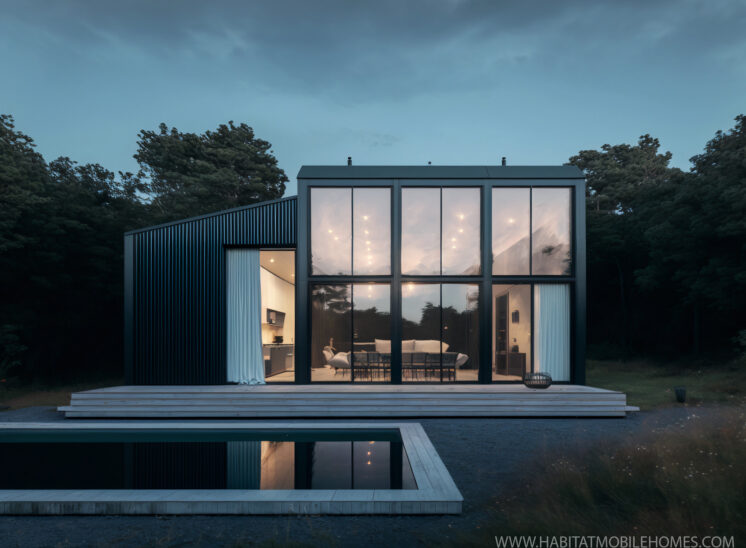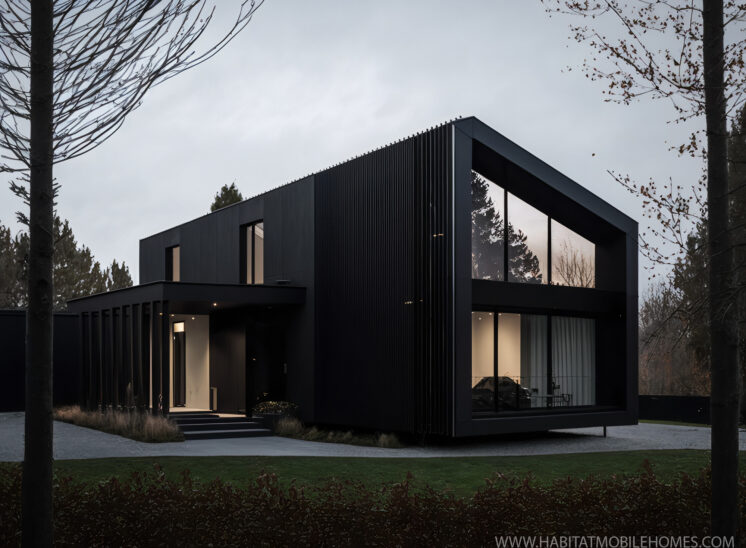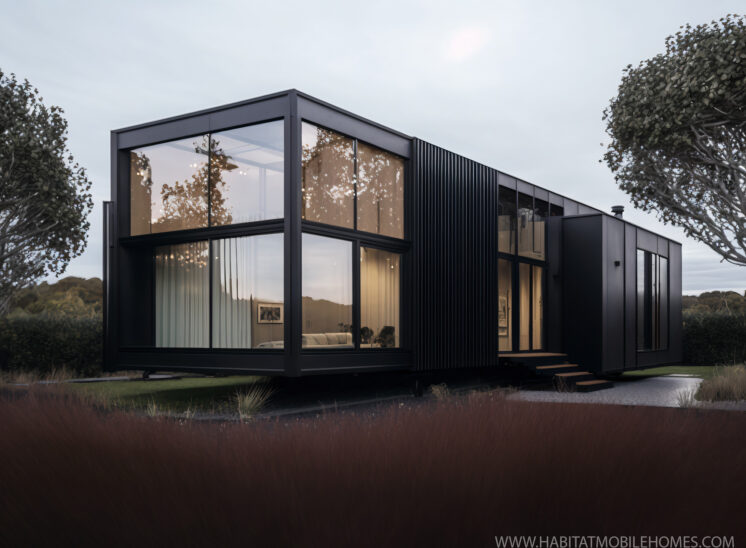Kanso: The Glass House of the Future
Are you tired of the same old mobile home designs? Are you looking for something that offers a modern look and feel with all the comforts of home? Then it’s time to check out Kanso – the new range of twin unit mobile homes and timber frame buildings that promise to revolutionize your living space. Kanso is designed to be an efficient, stylish, and affordable alternative to traditional mobile homes. It features maximum amounts of glass for outstanding views and plenty of natural light. Plus, the interiors are customizable so you can create a unique living space that reflects your personality. So if you’re ready to live in luxury without breaking the bank, Kanso is the perfect solution.
Kanso boasts a sleek exterior design with lots of windows and doors for natural lighting. It also includes cedar siding and double-glazed windows for added insulation. The interior also has lots of glass as well as wood paneling in various shades. You’ll find plenty of storage space in each unit, plus built-in shelving and closets for organizing your belongings. The kitchen comes complete with modern cabinets, appliances, countertops, and sinks for preparing meals quickly and easily. And best of all, each unit has its own bathroom with a full-sized shower/bathtub combo for added convenience.
Kanso is designed to provide flexible living solutions whether you’re looking for a permanent residence or a temporary home away from home. The units come in various sizes ranging from one-bedroom apartments to four-bedroom cottages so you can choose one that fits your lifestyle perfectly. Plus, they are easy to transport so you can move them wherever life takes you without any hassle or fuss! And since they are made out of sturdy materials like steel frames and insulated walls, they will last for years without needing any major repairs or maintenance.
Understanding Permitted Development Rights for Agricultural Buildings in the UK
Permitted development rights provide a simplified planning process for certain types of development, including agricultural buildings. In the UK, farmers who own land of 5 hectares or more have the right to erect, extend, or alter a building without the need to apply for planning permission.
These rights apply to agricultural buildings used for farming purposes such as storage of equipment, livestock or crops, as well as for accommodation for farm workers. Additionally, excavations and engineering operations that are required for agricultural purposes are also permitted without planning permission.
However, it's important to note that not all development is covered by permitted development rights. For example, if the building is located in a conservation area or is listed, or if it's intended for commercial or residential use, then planning permission will be required.
It's also worth noting that although permitted development rights allow for certain types of development without planning permission, some details may still require approval. For example, the size and location of the building, as well as its design and appearance, may need to be approved by the local planning authority.
To ensure that your development is covered by permitted development rights, it's important to check the details of the current regulations and to seek professional advice from a planning consultant or architect. They can advise you on the specific requirements for your project and help you to prepare the necessary applications and documents.
In conclusion, permitted development rights offer farmers and landowners a simplified planning process for agricultural buildings on land of 5 hectares or more. While not all development is covered, it's still a useful tool for farmers who need to extend or alter their buildings for farming purposes. However, seeking professional advice and ensuring that all requirements are met is essential to avoid any delays or issues with planning permission.
Farmers, You've Got the Right to Build (Almost) Whatever You Want!"
Are you a farmer in the UK? Do you dream of building a shiny new barn or expanding your existing farm buildings without the hassle of getting planning permission? Well, good news! Permitted development rights mean that if your farm is 5 hectares or more, you can build, extend, or alter a building without asking for permission.
That's right, you've got the right to build (almost) whatever you want! You can also carry out excavations and engineering operations needed for agricultural purposes without the need for additional approval. However, be aware that there are still some details of the development that may require approval.
This is great news for farmers looking to expand or modernize their farms. With the right to build without planning permission, you can save time and money on the process, allowing you to focus on what really matters - growing crops and raising livestock.
So, go ahead, dream big and build big! Just be sure to follow the rules and regulations to ensure that your development is safe and sustainable. With permitted development rights on your side, the sky's the limit for your farming ambitions.
Unleash Your Inner Farmer: Understanding Class A Agricultural Development in the UK
Are you a farmer or landowner with a plot of 5 hectares or more in the UK? Have you ever wondered what you can and cannot do on your land without the hassle of obtaining planning permission? Well, you’re in luck! Class A Agricultural Development is here to give you a helping hand.
In essence, Class A grants permitted development rights to agricultural units of 5 hectares or more. This means that if you fall within this category, you are permitted to carry out works for the erection, extension or alteration of a building, as well as any excavation or engineering operations needed for agricultural purposes without having to apply for planning permission.
This is great news for farmers who want to build new structures or expand their existing ones. However, it’s important to note that there are still limitations and conditions to follow under Class A. For example, any new building or extension must be within the curtilage of the existing unit, and any excavation or engineering works must also be solely for agricultural purposes.
It’s worth noting that there are also additional requirements for some developments, such as the need to obtain prior approval for certain details. This includes the siting and design of new agricultural buildings, as well as any changes to the external appearance of existing buildings.
So, what can you do with Class A Agricultural Development rights? The possibilities are endless! You could build a new barn to store your farm equipment, expand your existing animal housing facilities or even construct a new farmhouse.
But it’s not just about building new structures – Class A also allows for the alteration of existing buildings. So, if you’ve been thinking about converting an old cowshed into a workshop, or turning an old stable into a holiday cottage, Class A Agricultural Development may be just what you need.
In conclusion, Class A Agricultural Development is a great opportunity for farmers and landowners to expand their businesses and make the most of their land without having to go through the often lengthy and complicated planning permission process. So, if you’re lucky enough to have 5 hectares or more of land, why not unleash your inner farmer and start planning your next agricultural development project today?
Exploring Permitted Development Rights for Agricultural Development on Larger Units
If you own a large agricultural unit of 5 hectares or more, you may be eligible for permitted development rights for Class A agricultural development. This means that you may be able to carry out certain development works on your land without the need for planning permission.
Class A allows for the erection, extension, or alteration of a building, as well as any excavation or engineering operations needed for agricultural purposes. This can include the construction of new farm buildings, the expansion of existing structures, and the installation of necessary infrastructure.
It's important to note that while Class A permits certain types of development, there are still regulations that must be followed. For example, any new or altered buildings must comply with health and safety standards, and any excavation or engineering work must not pose a risk to the environment or nearby properties.
Additionally, it's important to understand that permitted development rights do not apply to all types of agricultural development. For example, if you plan to build a new farmhouse on your land, this would likely require planning permission even if your unit is over 5 hectares.
To determine if your agricultural development plans qualify for Class A permitted development rights, it's best to consult with a qualified professional such as a planning consultant or local authority representative. They can help you navigate the regulations and requirements and ensure that your development plans are compliant with UK law.
Understanding Permitted Development Rights in the UK - Farm Land
If you own a farm or agricultural land in the UK, you may be familiar with the concept of permitted development. Permitted development rights allow you to make certain types of changes to your property without needing to apply for planning permission. This can be a valuable tool for farmers and landowners who wish to expand their operations or make improvements to their property.
One of the main types of permitted development is Class A agricultural development. This applies to agricultural units of five hectares or more, and allows for the erection, extension, or alteration of buildings. This can include new barns, storage facilities, or other agricultural structures that are needed for your farming operation.
Another type of permitted development that may be of interest to farmers is forestry buildings. Under certain circumstances, you may be able to build forestry buildings on your land without needing to apply for planning permission. This can include structures for the storage of equipment or the processing of timber.
Caravan sites are another area where permitted development rights may apply. In some circumstances, you may be able to create a caravan site on your land without needing to apply for planning permission. This can be useful if you wish to provide accommodation for workers or other visitors to your farm.
It is important to note that even if your proposed development falls under permitted development rights, you may still need to comply with certain regulations and obtain approval for certain details of the development. For example, you may need to ensure that your new building meets certain energy efficiency standards, or that it is built to a certain height or size.
If you are unsure whether your proposed development falls under permitted development rights, it is a good idea to consult with a planning professional or your local council. They can help you understand the regulations and requirements that apply to your specific situation, and guide you through the process of obtaining any necessary approvals.
In summary, permitted development rights can be a valuable tool for farmers and landowners who wish to make changes to their property. By understanding the types of development that are covered under permitted development rights, and working with professionals to ensure compliance with regulations, you can make the most of your property and expand your operations in a sustainable and responsible manner.

